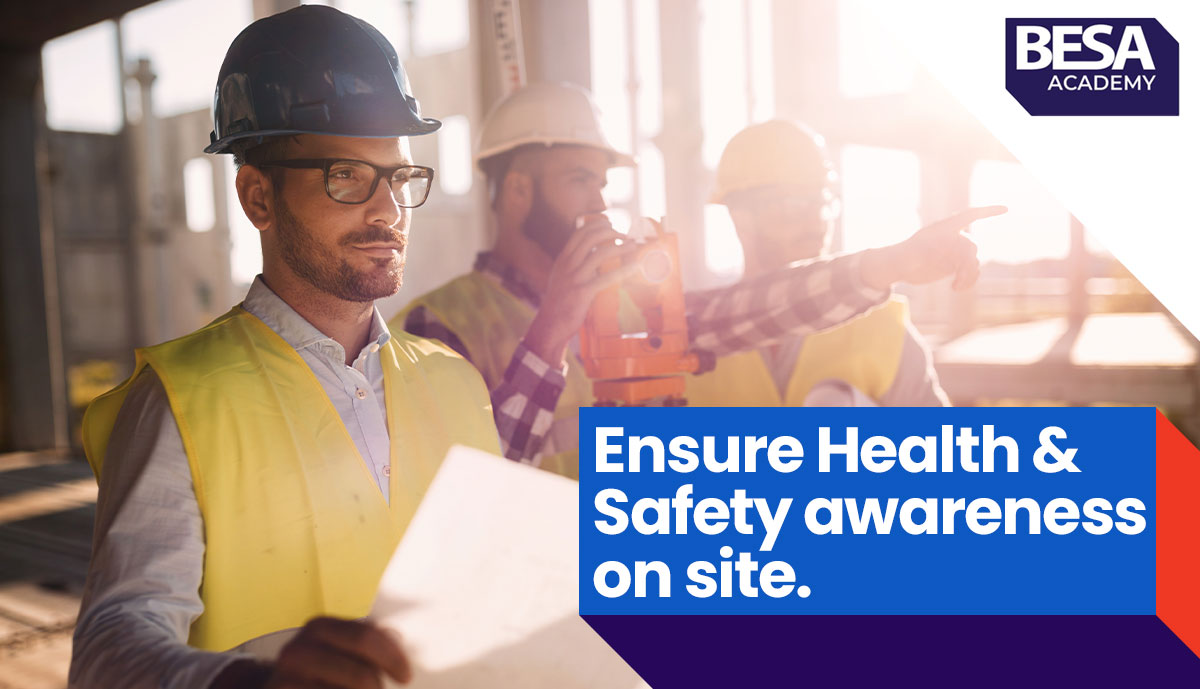
H&S Challenges in the Construction Industry FAQs
Working in the construction industry involves daily exposure to a wide range of potential hazards and risks. From fall dangers and struck-by incidents to respiratory illnesses and musculoskeletal disorders, construction workers face numerous threats to their health and safety on job sites.
As an employer or worker in this industry, it's critical to understand the key health and safety challenges in the construction industry and how to protect yourself and others from injuries, illnesses and fatalities. Properly identifying hazards, conducting risk assessments, implementing effective control measures, providing training, and building a culture focused on safety are all crucial components.

For companies looking for guidance on construction health and safety best practices, becoming a member of the British Engineering Services Association (BESA) can provide valuable resources. BESA offers training courses, guidance documents, risk assessment templates, health and safety policies and procedures, industry updates and a community of other members to collaborate with on improving site safety standards.
This FAQ page covers some of the most common questions related to the main health risks in construction. As a member of BESA, you have access to a comprehensive FAQ section covering an extensive range of construction health and safety topics. If you can't find an answer to your specific question, you can book a private one-to-one consultation session with BESA's Head of Health and Safety, Rebecca Crosland, to discuss any related health and safety support or guidance you may need.
Why is health and safety important in construction?
Construction has a higher rate of injuries and fatalities than most other industries, due to the physical nature of the work and exposure to many safety hazards like falling objects, working at heights, operating heavy machinery, confined spaces, and more. Prioritising health and safety protects workers and is also required by law.
How can health and safety be improved in the construction industry?
Some key ways include conducting comprehensive risk assessments, using proper personal protective equipment (PPE), implementing effective dust control measures, substituting less hazardous materials when possible, providing workers with safety training, ensuring equipment/tools are well-maintained, having robust reporting and enforcement of safety policies, and fostering a culture that prioritises worker health.
What are common health risks for construction workers?
Frequent health risks include musculoskeletal disorders, hearing loss, respiratory illnesses, skin rashes/diseases, heat stress, chemical exposures that could increase cancer risk over time, as well as traumatic injuries from falls, struck-by incidents, electrocutions and caught-in/caught-between hazards.
What is the biggest cause of chronic health issues in construction?
Exposure to respirable silica dust from concrete, stone, rock and sand is one of the biggest contributors to long-term lung diseases like silicosis, chronic obstructive pulmonary disease (COPD), and lung cancer in construction workers over prolonged periods.
What is a risk assessment in construction?
A risk assessment is the process of identifying potential hazards on a construction site, analysing what risks they pose to workers, and determining appropriate control measures to eliminate or mitigate those risks. Performing thorough risk assessments is a critical part of construction safety management. As a BESA member you can access a wide range of free risk assessment templates or we can also provide custom risk assessment templates based on your individual needs.
What PPE is required for HVAC work in the UK?
Common PPE for HVAC contractors includes hard hats, safety glasses, steel-toed boots, cut-resistant gloves, hearing protection, and sometimes respiratory protection if working in dusty areas. Following site-specific PPE requirements is also necessary.
How can electrical fire risks be reduced on sites?
Reducing electrical fire hazards involves properly grounding equipment, using GFCI outlets, avoiding overloaded circuits, securing cables properly, maintaining tools/equipment, and following hot work protocols when any potential ignition sources are present.
What are the dangers of working in confined spaces for HVAC?
Confined space hazards include oxygen deficiency, toxic atmospheres, engulfment, entrapment, and heat stress. Confined spaces must be identified, properly ventilated, and safe entry procedures like gas monitoring and rescue plans followed.
